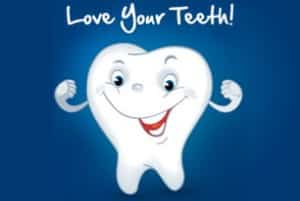
What Is Tooth Decay?
Also called cavities or caries, tooth decay is among the world’s most common health problems. Cavities are most prevalent in older adults, teenagers and children, however anyone can get them, including infants. Dental cavity formation is caused by permanently damaged areas in the hard surfaces of your teeth developing into tiny holes or openings, and there are three basic types:
- Smooth surface cavities – which normally appear on the sides of your teeth
- Pit and fissure cavities – which normally appear on the bumpy surfaces at the top of your teeth
- Root cavities – which normally appear below your gum line and over the roots of your teeth
How Does Tooth Decay Develop?
The hard surfaces (called enamel) of your teeth can become damaged over time, and in terms of the stages of tooth decay, there are three main ones:
- Plaque forms. Dental plaque is the clear sticky film coating your teeth, and can be caused by not cleaning your teeth well enough and/or eating a lot of starches and sugars. When these aren’t removed from teeth, bacteria begins feeding on them and forming plaque. Plaque on your teeth can then harden above or under your gum line and form tartar (or calculus). This makes plaque more difficult to remove and it creates a shield for the bacteria.
- Plaque attacks. The acids in plaque now start to remove minerals in your tooth’s hard outer enamel, and this erosion causes tiny holes or openings in the enamel. This is the first stage of cavities forming. Once areas of enamel are worn away, acids and bacteria can reach the next layer of your teeth, which is called dentin. Dentin is softer than enamel and therefore less resistant to acid. Dentin has tiny tubes that are connected to the nerves in your teeth, and if they are affected, it can cause tooth sensitivity.
- Destruction continues. Without treatment and as tooth decay develops, the acid and bacteria continue their destructive path through your teeth and move to the material of your inner teeth, known as pulp. This contains blood vessels and nerves and it can therefore become irritated and swollen by bacteria. Because there is no place for swelling to expand on the inside of a tooth, nerves become pressed which causes pain. Discomfort can even extend outside of the root of a tooth and into the bone.
What Are The Risk Factors For Tooth Decay?
Everyone who has teeth can get cavities, however the following factors can increase the risks of dental cavity formation:
- Inadequate brushing. If you don’t clean your teeth soon after drinking and eating and/or you don’t brush well enough, plaque can form quickly and the first stages of tooth decay can begin.
- Tooth location. Dental decay most often occurs in your back teeth in your premolars and molars. This is because these teeth have lots of pits, grooves and small narrow spaces or openings and multiple roots that often collect food particles. These are therefore harder to keep clean compared to your smoother, easier-to-reach front teeth.
- Not getting enough fluoride. A naturally occurring mineral, fluoride helps prevent dental cavities and it can even reverse some of the earlier stages of damage. Because of its benefits, fluoride is added to our public water supplies and it’s also a common ingredient in toothpaste and mouthwashes. Bottled water, however, doesn’t contain fluoride.
- Age. Cavities can be more common in younger children, in teenagers and in older adults. In older adults this is because over time, gums can recede and teeth can wear down, making teeth more vulnerable to tooth decay. Older adults also often use more medications that can reduce saliva flow, which increases the risk as well.
- Dry mouth. Saliva helps to prevent decay by washing away plaque and food from your teeth. Saliva also contains substances that help counter the acids that are produced by bacteria. Some medications and medical conditions can also increase the risk of cavities by reducing your saliva production.
- Worn dental devices or fillings or dental devices. Dental devices can often stop fitting well over time and allow decay to form underneath them. Fillings can also develop rough edges, weaken or begin to break down which allows plaque to build up and become harder to remove.
- Certain drinks and foods. Foods like honey, sugar, milk, ice cream, soft drinks, cakes, biscuits, lollies, chips and dry cereals that cling to your teeth for a long time are more likely to cause tooth decay than foods that can be easily washed away by your saliva.
- Frequent sipping or snacking. When you constantly sip or snack on sugary or acidic drinks and foods, you are increasing the chances of bacteria producing acids that wear your teeth down. Constant sipping and snacking can also create a constant acid bath over your teeth.
- Infant bottle feeding. ‘Baby bottle tooth decay’ occurs when babies are given bedtime bottles that are filled with juice, formula, milk or other sugar-containing liquids. These drinks remain on the teeth during sleep, which can feed bacteria. Damage can also be caused by toddlers who constantly drink from sippy cups that are filled with these types of beverages.
- Heartburn. Gastroesophageal reflux disease (GERD) or heartburn can cause reflux (where stomach acid flows into your mouth), which can wear away tooth enamel and cause significant damage. This is because it exposes more of the dentin to bacteria, which can lead to tooth decay.
- Eating disorders. Bulimia and anorexia can lead to significant tooth erosion and therefore cavities. This is because stomach acid from repeated vomiting washes over the teeth and begins to dissolve the enamel. Eating disorders can also interfere with saliva production.
How Can I Prevent Tooth Decay?
In terms of tooth decay and how to prevent it, the best way to reduce dental cavities is to take care of your teeth. Cavity prevention starts at home, but regular dental check-ups are necessary as well. Good oral hygiene tips include:
- Brushing your teeth at least twice per day, in the morning and before bed. You should also try to brush your teeth after meals as well if you can.
- Flossing daily between your teeth to remove food particles and prevent the build up of plaque.
- Eating healthy foods like fresh fruit and vegetables, which can increase saliva flow.
- Avoiding foods that can get stuck in the pits and grooves of your teeth for long periods or brushing after eating them.
- Drinking fluoridated water and using toothpaste that contains fluoride.
- Avoiding frequent snacking and limiting the amount of sugary, carbonated foods and beverages that you eat.
- Rinsing your mouth out with tap water after eating sugary, carbonated foods to help remove bacteria and food particles from your mouth.
- Chewing on sugar-free gum, which can help wash away food particles.
- Getting periodic fluoride treatments and/or using an antibacterial mouth wash which can help reduce the amount of harmful bacteria in your mouth.
And of course, seeing your dentist regularly – at least twice a year is recommended!


